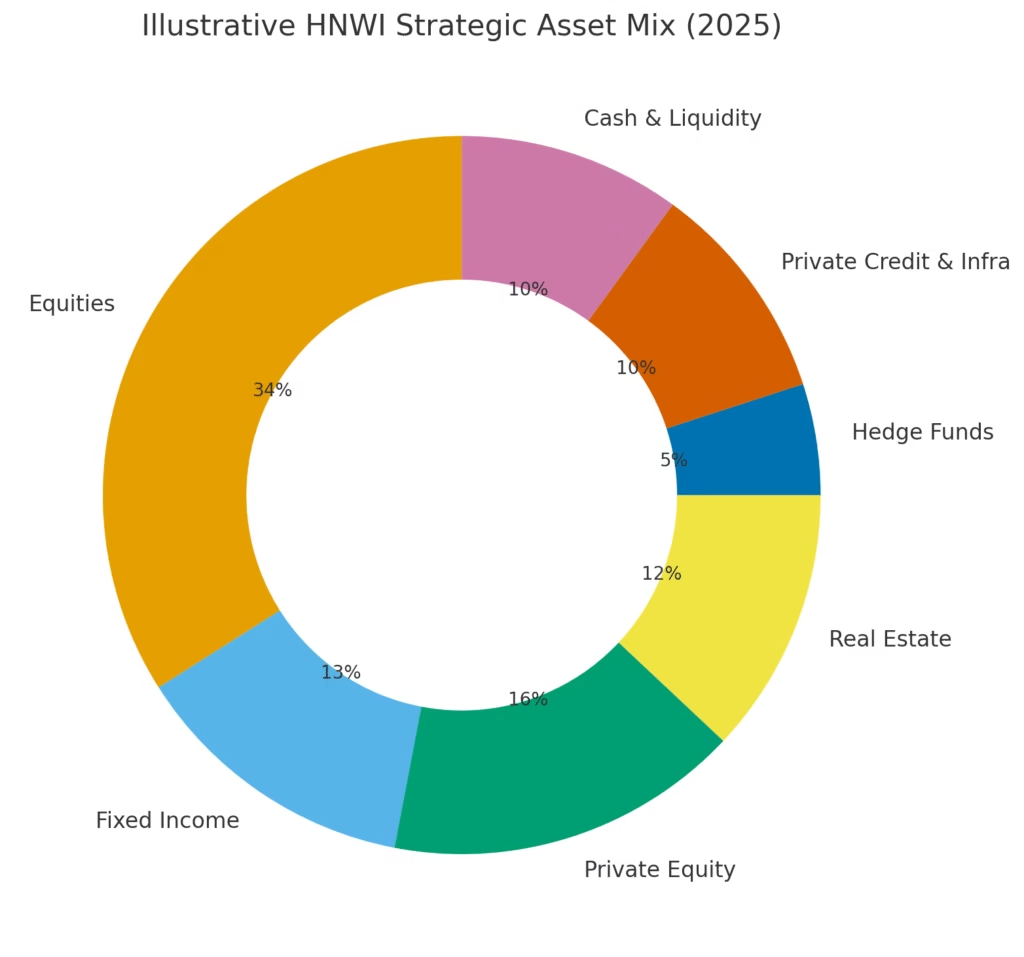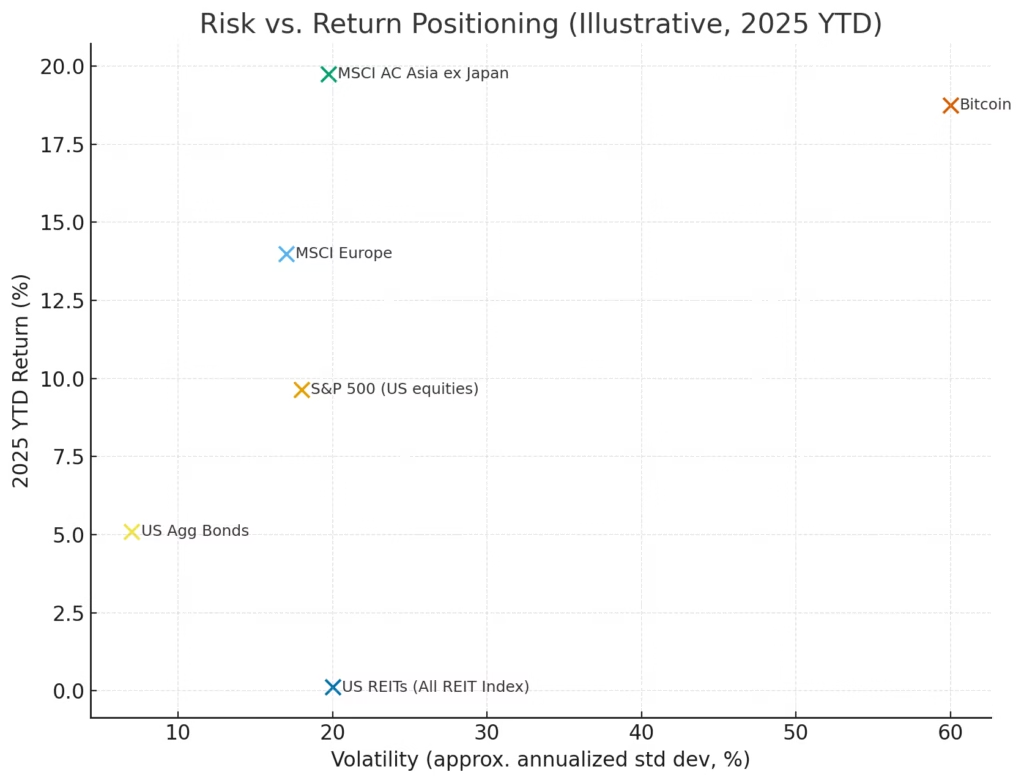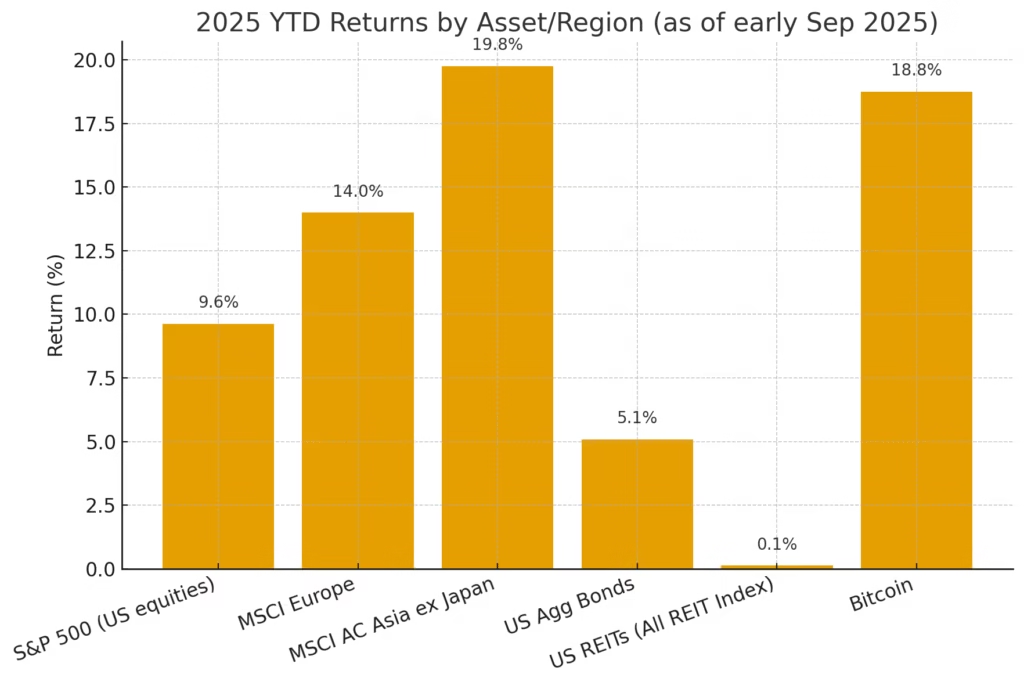
High net worth individuals diversify their portfolios with a mix of assets that protect wealth, generate passive income, and create long term stability. The approach may look complex from the outside, but in reality, it follows clear principles that can be applied even by everyday investors. Having worked closely with financial advisors and entrepreneurs, I have seen how wealthy individuals think differently about risk, time horizons, and asset classes. Their strategy is not only about making money, it is about protecting capital while still seeking growth.
Diversification is not a buzzword. It is the backbone of wealth preservation across volatile markets. A high net worth individual with $5 million or $50 million cannot afford to bet everything on a single sector or stock. Instead, their portfolios are carefully balanced between equities, bonds, real estate, private equity, alternative assets, and increasingly, digital investments. This blog will walk you through those strategies in detail, drawing from professional experience, market data, and global case studies.
Why High Net Worth Individuals Diversify Their Portfolios
At its core, diversification reduces risk. A portfolio entirely in tech stocks in 2021 looked brilliant, but when tech corrected in 2022, many investors lost more than 40 percent of their value. High net worth individuals avoid that cliff by spreading risk across industries, countries, and even currencies.
Another reason is legacy. Unlike smaller investors who often think about the next five to ten years, wealthy families plan for generations. They want their children and grandchildren to benefit from today’s financial planning. That long time horizon allows them to hold illiquid assets like real estate, infrastructure projects, or venture capital funds that might not pay off for a decade.
Most importantly, they understand the psychology of money. Wealthy individuals accept that they will not catch every market rally, but they also avoid catastrophic losses by never concentrating risk too heavily in one asset.

HNWI – High Net Worth Individuals.
Equities and Stocks in Diversified Portfolios
Equities are still the backbone of most high net worth portfolios. But here is the key difference. While smaller investors may only buy domestic stocks through a brokerage account, high net worth individuals diversify across:
- Global equities with exposure to US, European, and Asian markets.
- Blue chip companies that deliver stability and dividends.
- Growth stocks in emerging sectors like AI, green energy, or biotech.
- Private placements not available to retail investors.
Wealthy investors also use professional portfolio managers or family offices to monitor equity exposure. For example, a high net worth client in London may hold 40 percent of their equity allocation in US companies, 30 percent in European firms, and 30 percent in Asian growth markets. This spread minimizes geographic risk while still capturing global growth.

Real Estate as a Wealth Anchor
High net worth individuals diversify their portfolios through real estate because property offers both appreciation and passive income. But they rarely limit themselves to a single type of property. Instead, they build exposure across:
- Residential real estate in prime cities like New York, Singapore, or London.
- Commercial properties such as office towers, logistics centers, or shopping complexes.
- Vacation homes in tax efficient regions that can double as lifestyle assets.
- Real estate investment trusts (REITs) for liquidity and global reach.
I once spoke with an advisor in Singapore who explained that many wealthy clients own apartments in multiple countries. This is not just about luxury living. It is about hedging against currency fluctuations and political instability. If one market slows down, another may appreciate, keeping overall wealth stable.
Fixed Income and Bonds for Stability
While equities and real estate drive growth, bonds deliver stability. High net worth individuals diversify their portfolios with a significant allocation to government bonds, corporate debt, and municipal bonds. These assets provide predictable income and reduce volatility during market downturns.
For instance, a wealthy Canadian investor might hold long term US Treasury bonds alongside Canadian provincial bonds. Even if equities fall by 20 percent, the steady bond income cushions the overall portfolio. This stabilizing role becomes especially important when managing wealth across decades.
Alternative Investments and Private Equity
High net worth individuals diversify their portfolios aggressively into alternative assets. These include private equity, venture capital, hedge funds, commodities, and even fine art or collectibles. Alternative assets tend to be less correlated with traditional markets, which helps protect wealth during stock market downturns.
Private equity funds, for example, invest in companies before they go public, often producing outsized returns. Venture capital allows exposure to cutting edge startups, though with higher risk. Commodities like gold act as hedges against inflation. Even wine collections or rare art pieces can serve as valuable stores of wealth.
I recall one case where an entrepreneur in California allocated nearly 15 percent of his portfolio to renewable energy infrastructure projects. While the returns were not immediate, they provided long term income and tax advantages while aligning with his values.
Offshore Investments and Global Diversification
High net worth individuals diversify their portfolios not only by asset class but also by geography. Holding all your assets in one country exposes you to political, regulatory, and currency risks. To mitigate that, wealthy families often use offshore investments.
Popular destinations include Singapore, Switzerland, and Luxembourg for their strong banking systems and favorable tax frameworks. Others invest in Caribbean jurisdictions where trust structures offer privacy and estate planning benefits. The point is not secrecy. It is protection. By allocating capital globally, they ensure that no single government policy or economic downturn can wipe out their fortunes.
For example, a high net worth investor in Australia may hold private equity in the United States, real estate in the UK, and bonds in Singapore. This not only spreads risk but also exposes the portfolio to multiple growth cycles.

Tax Efficiency and Estate Planning
High net worth individuals diversify their portfolios with careful attention to tax efficiency. Taxes are often the single biggest expense for wealthy investors. They do not just focus on returns, they focus on after tax returns.
This is where tax efficient vehicles such as municipal bonds in the US, index linked savings certificates in the UK, or insurance linked investments in Singapore come into play. Estate planning is equally important. Trusts, foundations, and family offices are structured so that wealth transfers smoothly across generations without heavy taxation.
In one case, a Canadian entrepreneur set up a family trust that allowed his children to inherit business shares without triggering significant capital gains tax. This kind of foresight ensures that the portfolio continues to work for the family long after the original wealth creator is gone.
Philanthropy as a Portfolio Strategy
Philanthropy may not sound like diversification, but for high net worth individuals, it is an essential part of financial planning. Charitable foundations, donor advised funds, and impact investments allow them to align money with purpose while receiving tax advantages.
Bill Gates and Warren Buffett are famous examples, but even less public families use philanthropy strategically. By setting up charitable trusts, they not only contribute to society but also gain control over how their wealth is allocated long term. In some cases, philanthropic portfolios are managed like endowments, generating income while supporting causes the family cares about.
Role of Family Offices
High net worth individuals diversify their portfolios with professional support. Family offices are specialized entities that manage everything from investments to taxes to lifestyle services. A single family office may oversee hundreds of millions in assets, while a multi family office pools resources from several wealthy families.
What makes family offices unique is the holistic view. They do not just pick stocks or buy real estate. They look at insurance, legal risks, succession planning, philanthropy, and even concierge services. This centralized structure ensures that diversification strategies are consistent and aligned with long term goals.
A friend who works in a Singapore based multi family office once described how clients were shifting into digital assets, but only after creating a risk managed framework. Instead of speculative trading, these offices buy regulated funds and custody solutions to protect against volatility. That kind of discipline explains why wealthy families preserve wealth across generations.
Behavioral Differences Between Wealthy and Average Investors
High net worth individuals diversify their portfolios not only with different assets but also with different mindsets. They treat money as a tool, not as a source of emotion. While retail investors often panic during downturns, wealthy families stay patient and sometimes even increase their investments.
They also think in decades, not years. When average investors chase short term trends, wealthy individuals accept temporary underperformance for long term gain. For example, many family offices doubled down on private equity during the 2008 financial crisis. While markets were collapsing, they bought into undervalued companies. Ten years later, those bets paid off significantly.
This discipline comes from experience and access to advisors. But it also comes from an acceptance of risk. Wealthy individuals understand that losses are inevitable in some areas of the portfolio, but diversification ensures the overall strategy remains intact.
Digital Assets and Emerging Opportunities
High net worth individuals diversify their portfolios today by cautiously including digital assets. Cryptocurrencies, blockchain based funds, and tokenized real estate have become part of the conversation in family offices around the world. However, the wealthy do not approach crypto like retail investors chasing quick profits.
Instead, they allocate a small percentage, often less than five percent, to regulated crypto funds or custodial platforms that provide security. In the US and Singapore, many wealthy clients invest through exchange traded products that track Bitcoin or Ethereum rather than holding the coins directly. This protects them from technical risks while still giving exposure to potential upside.
Some families are also exploring tokenized private equity, where shares in startups are represented digitally on secure platforms. This not only diversifies their holdings but also increases liquidity in traditionally illiquid markets.
The lesson here is balance. High net worth individuals diversify their portfolios with innovation, but they do not gamble their core wealth.
Risk Management and Insurance Strategies
One of the most overlooked aspects of diversification is protection. High net worth individuals know that building assets is only half the battle. Protecting them is equally important.
Insurance plays a major role. Wealthy families use life insurance, key person insurance, and umbrella liability policies to guard against unexpected events. For example, a successful entrepreneur in Canada might use whole life insurance both as protection and as a tax efficient savings tool.
They also focus on legal structures. Limited liability companies, trusts, and holding companies are used to separate personal and business risks. This ensures that one lawsuit or market event does not compromise the entire portfolio.
Think of it as building a fortress around the castle. Diversification spreads risk across different assets, but insurance and structures protect the foundation itself.
Lessons Everyday Investors Can Learn
While the strategies of billionaires can feel distant, many of the principles behind how high net worth individuals diversify their portfolios can be applied on a smaller scale.
- Think long term. Wealthy investors plan in decades. Even if you are in your 30s or 40s, use tools like a SIP calculator to see how compounding can work for you.
- Balance growth and stability. Just as wealthy families mix equities with bonds and real estate, you can balance stocks with index funds and debt instruments.
- Global mindset. Consider international ETFs or REITs to gain exposure beyond your home country.
- Protect what you build. Even basic health, term, and liability insurance can save you from financial shocks.
- Educate continuously. Wealthy individuals hire advisors and learn constantly. You may not afford a family office, but you can still learn from credible resources like Morningstar or Stock and investment.
The secret is not wealth itself, but discipline. Following the same mindset as the wealthy patience, diversification, and risk management can help you build stability regardless of your income level.
My Final Thoughts
High net worth individuals diversify their portfolios with precision, patience, and purpose. From equities and real estate to offshore assets, philanthropy, digital investments, and risk management, their approach is holistic. They view money not as a short term tool but as a multi generational asset.
For everyday investors, the lesson is clear. Diversification is not about copying billionaires, it is about applying the same principles at your scale. Spread your investments across assets, think globally, and protect your foundation with insurance and planning.
Whether you are just starting or already building wealth, you can borrow from these strategies today. Use tools like our SIP calculator to map out your compounding growth. Explore our detailed guide on 10 Proven Strategies to Build Wealth in Your 30s for more actionable insights.
By learning how high net worth individuals diversify their portfolios, you gain a blueprint for your own financial independence.



